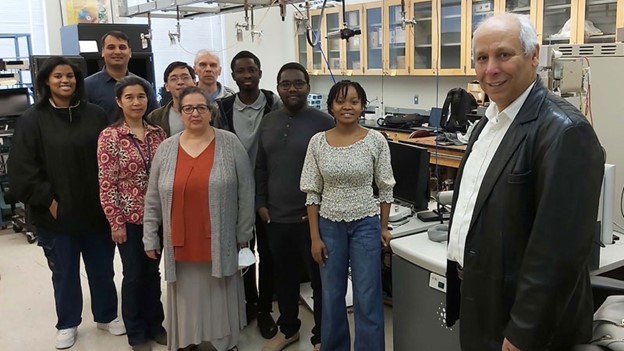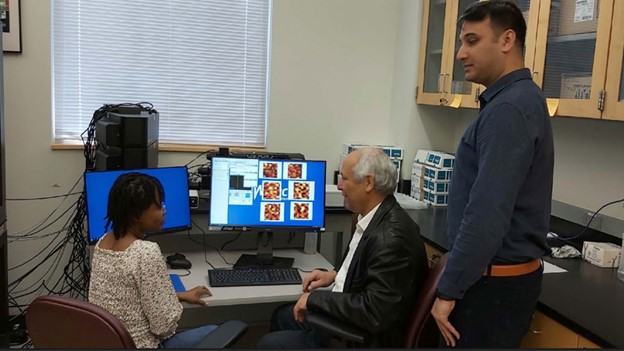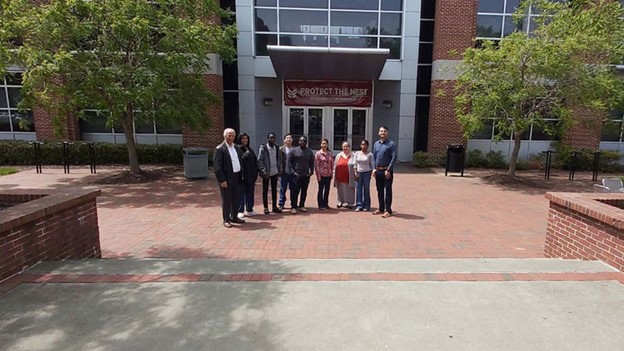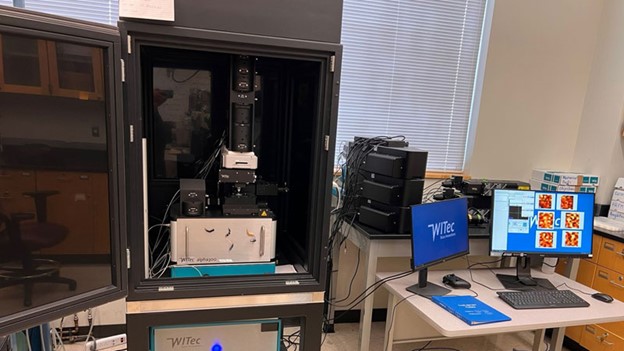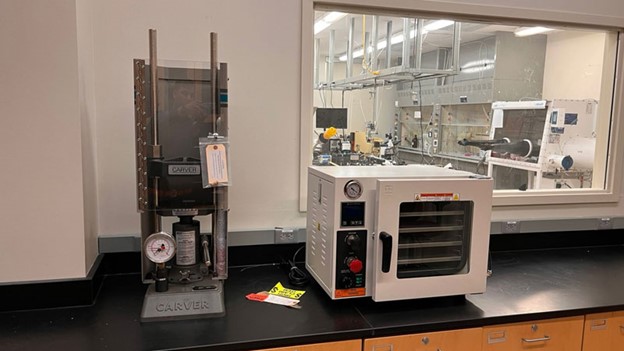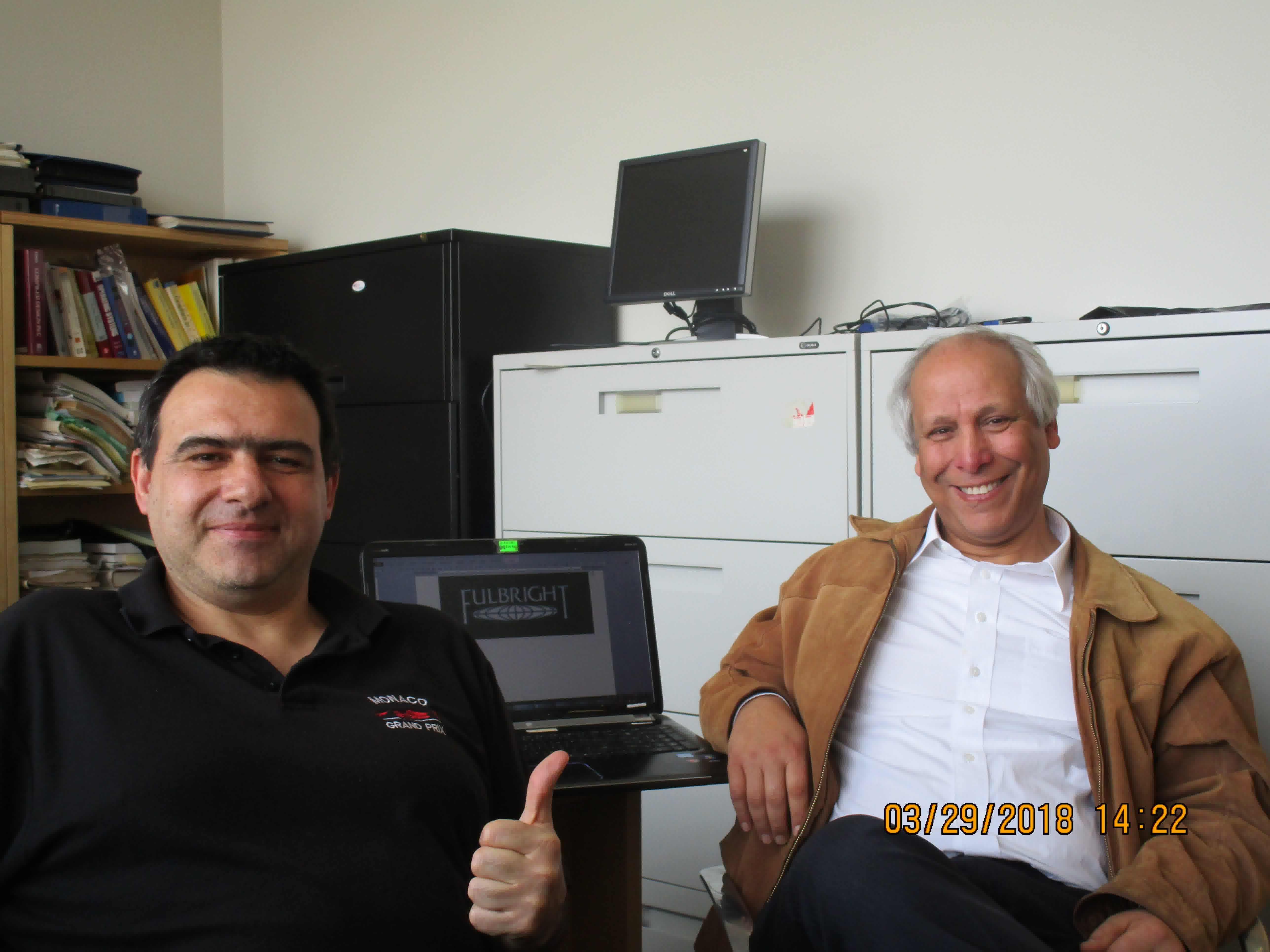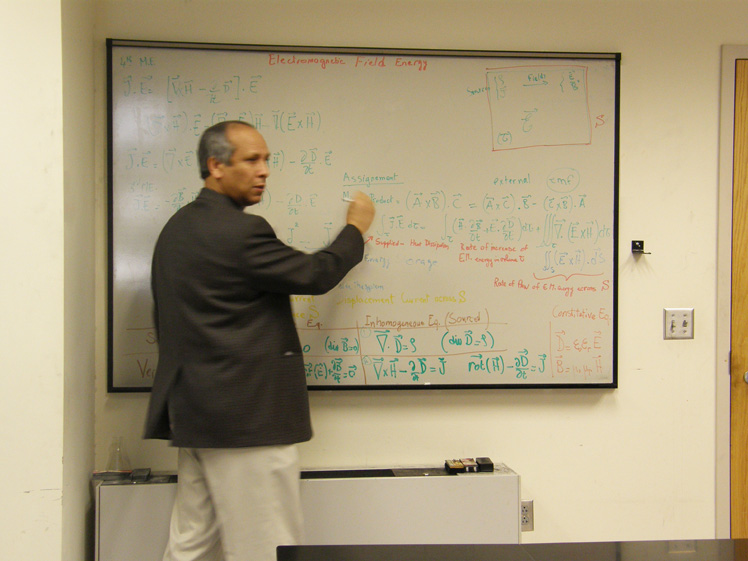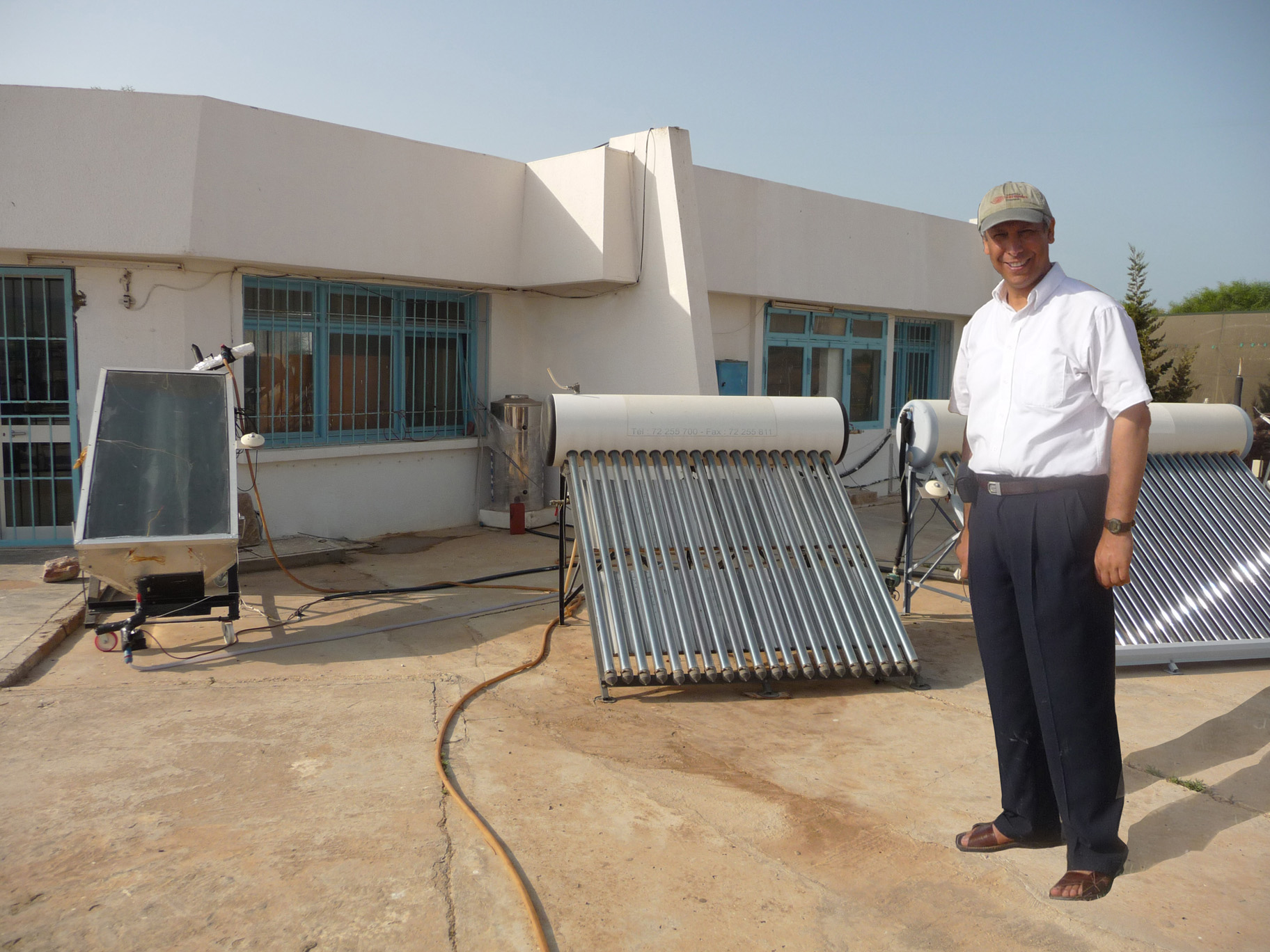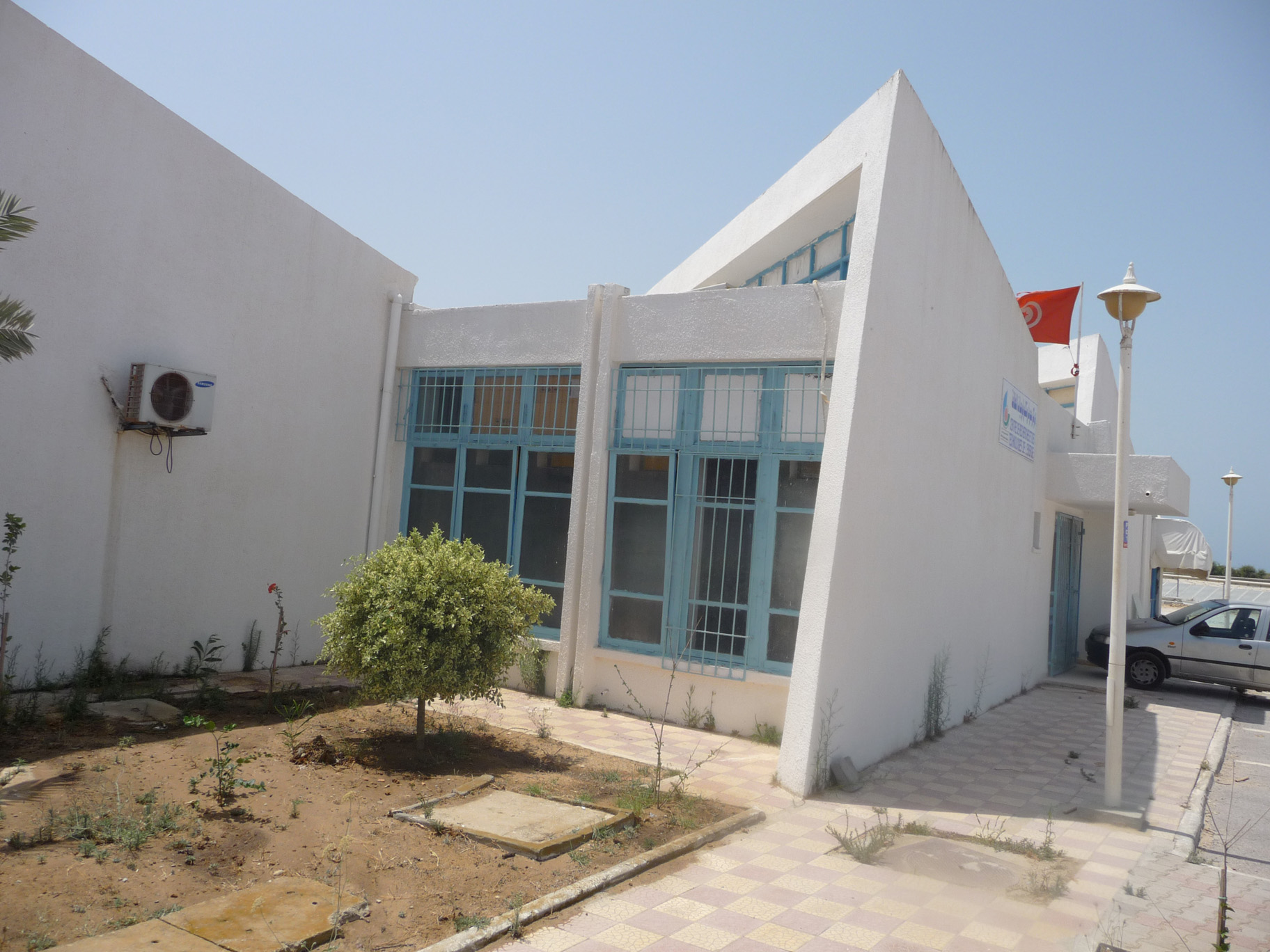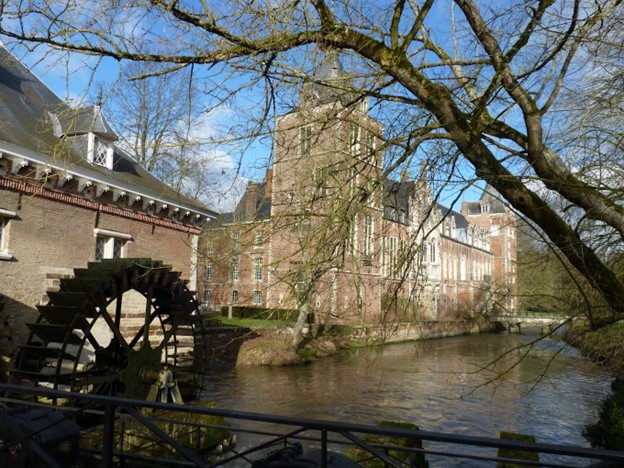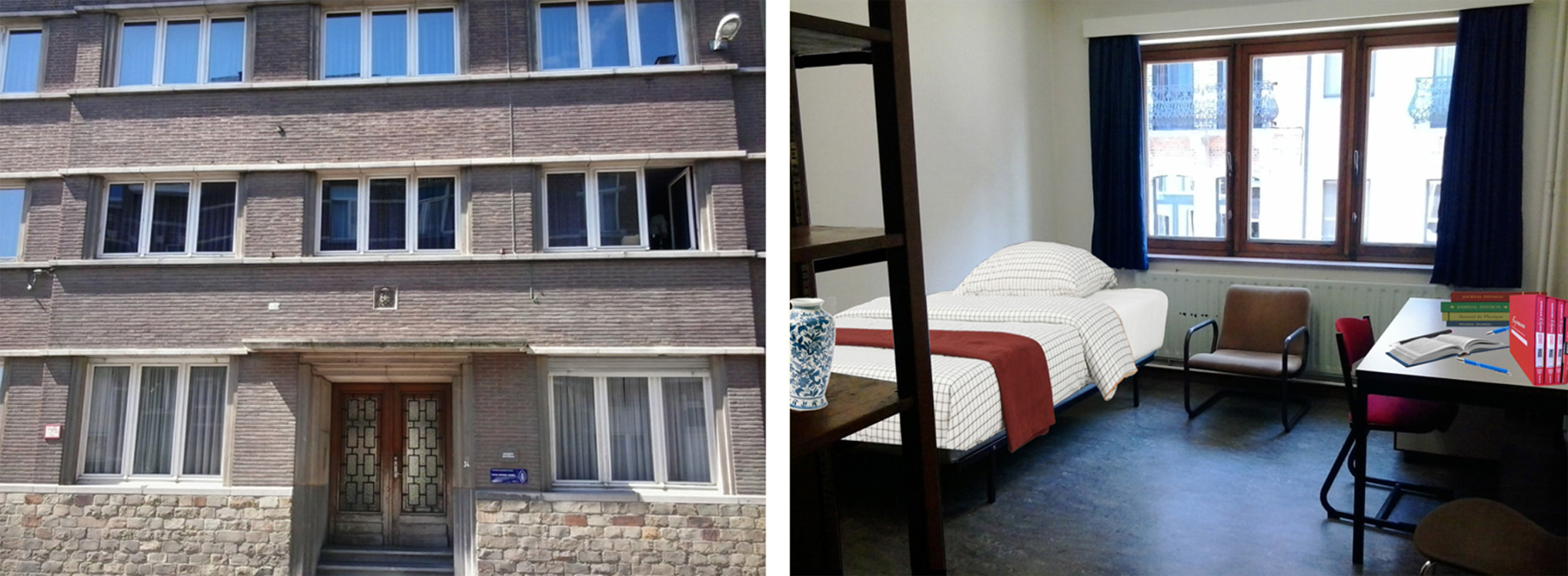|
Dr. Karoui and his team in the nanomaterial characterization laboratory at NCCU. |
|
Dr. Karoui teaches graduate student Ruth Oluwatoyin the characterization of piezoelectric and ferroelectric materials using state of the art WiTec Scanning Raman spectroscopy. |
|
Students Brandon Ma and Taiwo and postdoc Dr Akram joined the training session offered by Dr Karoui on Scanning Raman Spectroscopy. |
|
While the university motto was "Protecting the Eagle Nest" during the COVID pandemic, my team and I pursued our research endeavor. |
|
Newly acquired, $900,000 equipment for NSOM, 3D Raman spectroscopy, TERS, scanning PL, fluorescence spectroscopy, AFM, conductive AFM, KPFM, KSP, and some proprietary nanoscale optoelectronic characterization methods of ultra-high purity semiconductors. |
|
One area of the new piezoelectric and ferroelectric laboratory being set-up thanks in part to the NSAM-ML project. Two Fulbright Alumini relaxing in Dr Kulinskii’s office at NCCU Karoui and Vladmir Kulinskii (Odessa, Ukraine) after discussing some new quantum physics phenomena in nanostructured materials. The outcome was used for developing a joint research funding proposal to DOD. Dr Kulinskii is a theorist in the area of physics of nanostructure and quasi-particles. Dr Karoui and Dr Kulinskii will share knowledge for developing a new method for enhancing Raman for nanoscale analysis of nanomaterials.
|
 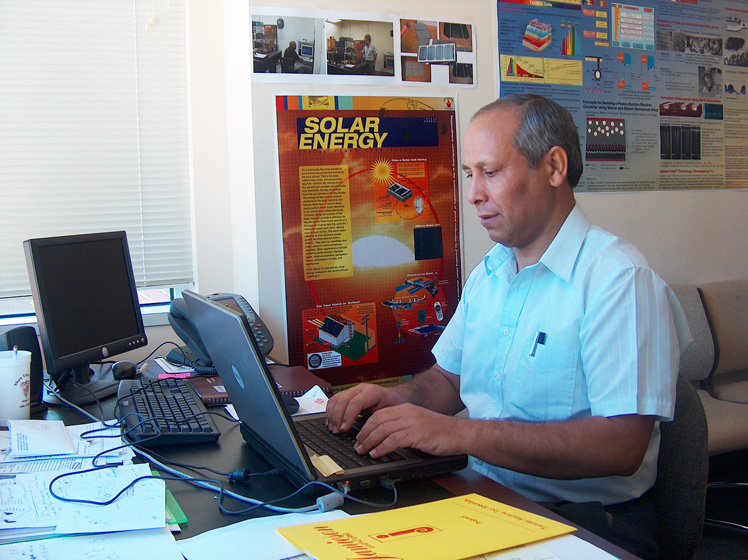 Dr Karoui's office at Shaw University. He just received a grant for research on third generation solar cells, where the focus was on enhancing IR photon absorption in indirect semiconductors through two photon absorption.
Dr. Karoui teaching electromagnetism. |
 Dr Karoui’s first automated set-up for measuring Light Beam Induced Current (LBIC) in solar cells and photosensors. By adding a reflectance module, He augmented this experimental set-up to become Reflectance Coupled to LBIC (RC-LBIC). This allowed, for the first time to filter out the LBIC signal, and to separate the induced minority charge carrier recombination from the surface effects. This was done by descriminating decays due to light scattering, and to account for the light trapping effect on the signal. The technique was then extended to unravel the nature of various defects found in solar cells made with polycrystalline semiconductors. For instance, mirror-like etched polycrystalline silicon (using CP4) helped distinguishing between dislocations and grain boundaries induced carrier recombination in solar cells made of such material. Furthermore, Dr Karoui has also utilized the set-up to carry out in-situ laser annealing simultaneously with RC-LBIC measurements. UV surface annealing of solar cells was also tested at IMEC in Belgium. These thermal treatments allowed controlling the defect behavior in the near surface region of solar cell substrates, while measuring the recombination current effected by the heating conditions during the annealing. Dr Karoui and his colleague Dr Hatem Ezzaouia inspecting a testing site of photovoltaic pumping systems.
Testing site for Solar Food Dryers. Various models have been tested. Many were made by private companies, and other were prototypes developed in the department that Dr Karoui was directing. The research team used both FEA and FDTD methods for their modeling of the dryers. Steady state and time dependent studies were carried out. The team focused on the energy and mass transfer and the behavior of the food being dried (vegetables, fruits, nuts,...). The studies were done for all the seasons of the year, where the sun influx and direction vary drastically. Here shown a standalone dryer, and an enhanced dryer with an external hot air solar module. On the right side of the picture, there is a hot water solar system that is being tested over a couple of years. Testing site of Solar Thermal Panel, a wide range of panel designs, thermal absorbers, storage methods and devices, and system controllers have been tested as early as 1982. Dozens of Ph.D. thesis and engineering thesis have been successfully completed. Here we can see a high efficiency Solar Thermal module autonomously oriented (mounted on a single axis solar trucker), and two panels made of high efficiency solar energy capturers (i.e., vacuum tubes, with a core made of high emissivity black body). Solar Architecture, testing site. Multiple innovative features were then tested and quantitatively evaluated, such as the combination of large Trombe Walls for capturing heat during winter, building orientation favorable for capturing heat during cold seasons, Directed convective air currents, Chimney, Underground heat storage, Cooling using underground water, Upper Windows with thermochromic coated glass, Light reflective walls using special coatings, Thermally isolated walls, Targeted materials, etc. The color of the building is important in North African and sub-sharian countries. |
|
Mr. Abdennaceur Karoui with his thesis mentor, Dr Zahoming Zhang, posing close to the department of Electronic, Electromechanic, and Electrotechnique (ESAT) and the majestic Arenberg Castle. Katholieke Universiteit die Leuven (KUL), in the outskirts of Leuven (Flemish Belgium), |
|
The prestigious Inter-university Micro- Electronic Center (IMEC) at the KUL, Belgium, where Mr. A. Karoui prepared the experimental part of his Ph.D. thesis, under the advisement of thesis promoter Prof. Robert Mertens.
Water wheel in the domain of the Arenberg Castle, Heverlee.
My Room at Home Vesalius in Leuven, 1984 - 1985, while preparing my physics Ph.D. thesis project at the Inter-University Center of Microelectronics (IMEC), Catholic University of Leuven, Belgium. |

